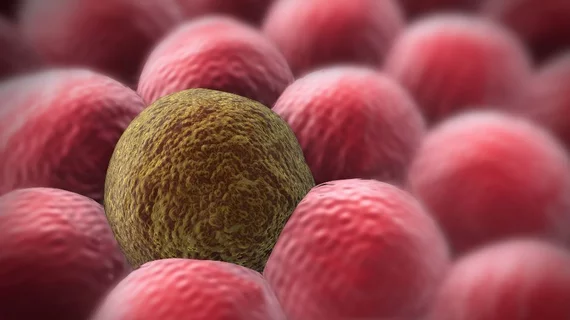Imaging agent targets iron-rich cancer cells, with potential far beyond oncology
A new imaging agent that targets iron in cancer cells is opening up new possibilities for advanced targeted therapies, according to research published in the July issue of the Journal of Nuclear Medicine.
All cancer cells consume vast amounts of iron, supplying the energy needed to rapidly multiply. And the radiotracer 18F-TRX can measure iron concentration within tumors to predict whether the disease will respond to treatment, University of California, San Francisco, experts explained.
The UCSF team utilized a novel chemistry breakthrough that targets the high cytosolic "labile" iron pool of cancer cells for their investigation.
“LIP levels in patient tumors have never been quantified," Adam R. Renslo, PhD, professor in the department of pharmaceutical chemistry at UCSF, said July 22. "Iron rapidly oxidizes once its cellular environment is disrupted, so it can't be quantified reliably from tumor biopsies. A biomarker for LIP could help determine which tumors have the highest LIP levels and might be especially vulnerable to LIP-targeted therapies."
With this in mind, Renslo et al. used 18F-TRX to image 10 graft models of glioma and renal cell carcinoma, keying in on LIP measurements. They also assessed if tumor samples were sensitive or averse to radiotracer uptake.
The radiopharmaceutical accurately distinguished LIP levels and gauged which tumors were most likely to respond to LIP-targeted therapies. And tracer uptake prior to treatment predicted sensitivity to therapy, the authors reported.
The required dose for adults is comparable to other 18-F-labeled imaging agents. And because iron irregularities occur in many other disorders—such as inflammation or neurodegenerative and cardiovascular diseases—the tracer may have a wide range of possibilities.
“Applying 18F-TRX in the respective patient populations to define the extent of LIP expansion in affected tissues will be an important milestone toward understanding the therapeutic potential of LIP-targeted therapies beyond oncology,” added Michael J. Evans, associate professor in residence in the department of radiology and biomedical imaging at UCSF.

